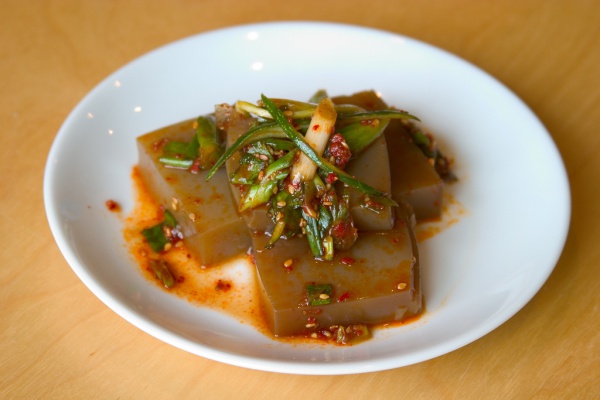Facts About Dotori-muk
Dotori-muk, or acorn jelly, is a traditional Korean dish made from acorn starch. This culinary practice dates back to ancient Korea, especially in mountainous regions where oak trees were abundant, and acorns were harvested every autumn. Acorns are rich in starch and proteins, but they must be properly processed to remove tannins, which are indigestible for humans.
The process of making dotori-muk begins with collecting acorns and grinding them into a paste. This paste is then sieved and settled in water to separate the starch from the fiber. The starch-water mixture is repeatedly rinsed to eliminate tannins, leaving behind a settled off-white starch at the bottom of the containers. This starch is then dried, ground into a powder, and packaged for sale. Today, commercial powdered forms of acorn starch are readily available in stores.
Dotori-muk is often enjoyed as dotorimuk muchim, a popular side dish. In this dish, chunks of dotori-muk are mixed with ingredients such as carrots, scallions, garlic, soy sauce, sesame oil, chili pepper powder, and sesame seeds for a flavorful experience. Another notable variation is muk-mari, a specialty from Daejeon's Muk-town since the 1980s. Muk-mari combines salted seaweed and dried acorn jelly, offering a unique texture and taste that has captured the interest of food enthusiasts.
Whether savoring it as a seasoned side dish or exploring regional specialties, dotori-muk offers a delightful way to experience the rich culinary traditions of Korea.

 North Korea
North Korea